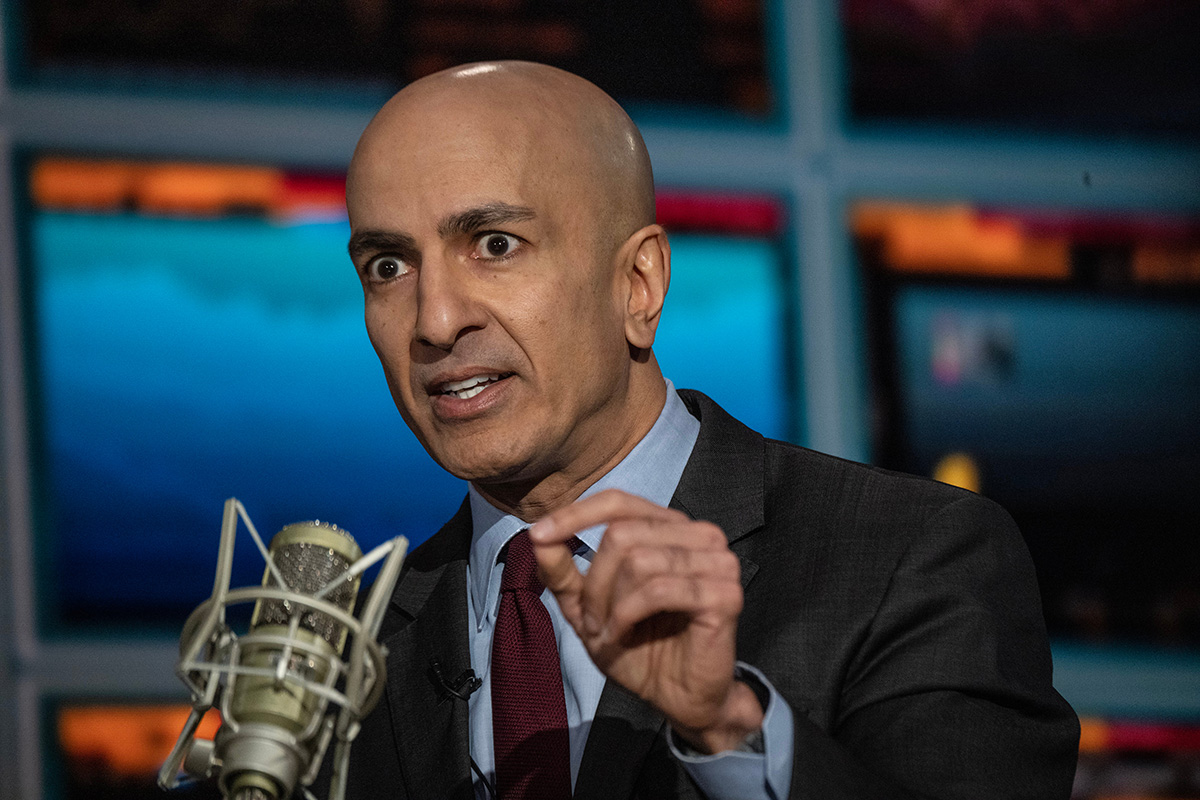 Minneapolis Fed President Neel Kashkari.
Minneapolis Fed President Neel Kashkari.
Federal Reserve Bank of Minneapolis President Neel Kashkari said it's likely the central bank will keep interest rates where they are "for an extended period of time," until officials are certain inflation is on track to their target.
In an essay published yesterday, the Minneapolis Fed chief said recent inflation data raises questions about whether monetary policy is restrictive enough to fully return price growth to 2 percent, the rate policymakers see as the sweet spot in a healthy economy.
Recommended For You
"The most likely scenario is we sit here for an extended period of time," he said Tuesday at the Milken Institute Global Conference. "If inflation started to tick back down or we saw some marked weakening in the labor market, then that might cause us to cut back on interest rates.
"Or if we get convinced eventually that inflation is embedded or entrenched now at 3 percent and that we need to go higher, we will do that if we need to," he added.
Kashkari said that's not his most likely scenario—and the bar for raising rates is quite high—but he wouldn't rule it out.
Kashkari singled out persistent housing inflation as a potential indicator that neutral interest rates, those that neither restrict nor stimulate the economy, may be higher in the short term. That could mean the Fed has more work to do to cool inflation, Kashkari wrote in the essay.
"My colleagues and I are, of course, very happy that the labor market has proven resilient, but, with inflation in the most recent quarter moving sideways, it raises questions about how restrictive policy really is," Kashkari wrote.
Fed officials have kept interest rates unchanged since their July 2023 meeting, and stronger-than-expected inflation data have kept officials from lowering borrowing costs from the highest levels since 2001. Investors now expect just under two cuts this year, from as many as six seen at the start of 2024.
Kashkari, who penciled in two rates cuts for this year when Fed officials met in March, said that he'll forecast anywhere from two to zero cuts for 2024 when officials next meet in June, based on incoming inflation data. Inflation, as measured by the Fed's preferred gauge, rose 2.7 percent in March. While that's down from a peak of 7.1 percent reached in 2022, it's faster than the 2.5 percent pace seen at the start of this year.
One of the biggest drivers of inflation right now is housing. A shortage in supply is keeping prices elevated, even as mortgage rates hover near their highest levels in more than 20 years. "Given that housing is a key channel through which monetary policy affects the economy, its resilience raises questions about whether policymakers and the market are misperceiving neutral, at least in the near term," he said.
Kashkari said he raised his longer-run neutral rate forecast to 2.5 percent, from 2 percent. Some of his colleagues on the Federal Open Market Committee (FOMC) have also raised those estimates, with the median forecast of the longer-run fed funds rate rising to 2.6 percent, from 2.5 percent, in the latest projections published in March.
The Minneapolis Fed chief, who doesn't vote on monetary policy this year, emphasized that the central bank must set policy based on where the neutral rate is in the short run.
"The uncertainty about where neutral is today creates a challenge for policymakers," he added.
Kashkari last published an essay in early February, in which he said policymakers had time to gauge incoming data before lowering interest rates. At the time, he said that shifts in the post-pandemic economic recovery may mean that neutral interest rates have moved higher. Kashkari has written a series of essays since 2022, as the Fed was tightening policy in an effort to cool inflation.
© Touchpoint Markets, All Rights Reserved. Request academic re-use from www.copyright.com. All other uses, submit a request to [email protected]. For more inforrmation visit Asset & Logo Licensing.



